The rosetail betta, also referred to as the rose petal betta. Their expansive D-shaped caudal fin undulates gracefully, rendering them an eye-catching addition to any home aquarium.
However, the breeding of these fish has sparked debate and raised ethical questions. Keep reading to learn more about the colors, varieties, and other fascinating aspects of rosetail bettas!
Quick Facts About Rosetail Betta
| Common Names | Rosetail Betta |
| Scientific Name | Betta splendens |
| Adult Size | 2.5 to 3 inches |
| Lifespan | 3 to 5 years |
| Family | Osphronemidae |
| Origin | Southeast Asia |
| Temperament | Aggressive |
| Compatibility | Low with other bettas, Moderate with other species |
| Tank Mates | Snails, Shrimp (caution with other fish) |
| Minimum Tank Size | 5 gallons |
| Habitat | Freshwater |
| Color | Varies (blue, red, white, etc.) |
| Skin Type | Scales |
| Care Level | Moderate |
| Breeding | Egg-layer |
| pH level | 6.5 – 7.5 |
| Water Hardness | Soft to moderately hard |
| Temperature | 75-80°F (24-27°C) |
| Diet | Carnivorous |
| Prey | Insects, small fish |
| Favorite Food | Bloodworms, brine shrimp |
What Is A Rosetail Betta?
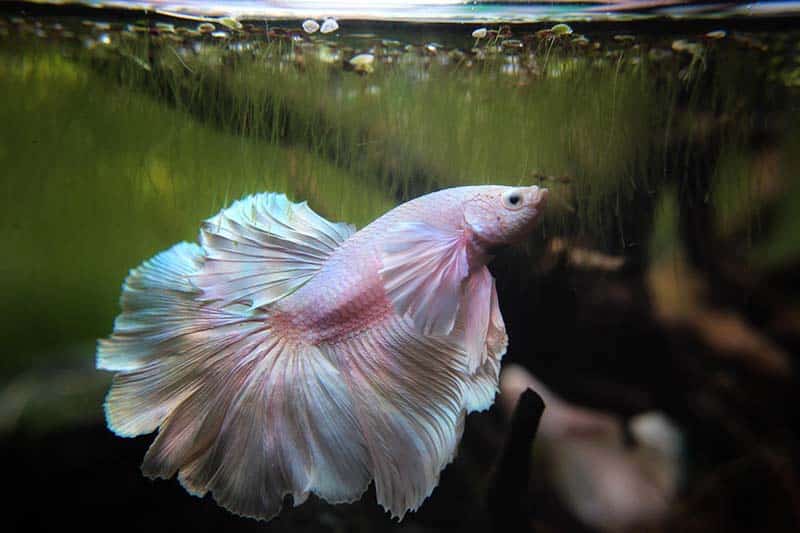
The Rosetail Betta, also known as the “Feathertail Betta,” is a special kind of Half-moon Betta fish. It has a really amazing tail that opens up like a fan, reminding people of a rose flower. This is why it’s called a Rosetail. Believe it or not, people used to think this tail was a mistake and didn’t want to breed these fish on purpose. They only started doing that in 1989. Now, these fish have been popular pets for over 30 years because of how pretty they are.
Their beauty is not just about how they look; it’s almost like they’re a piece of art. Their tails can sometimes look like they have feathers, adding even more wow factor to them. That’s why some people also call them Feathertail Bettas.
Typical Behavior & Temperament
Rosetail Bettas are really pretty, but they’re not the friendliest fish to have in a tank. Even among Bettas, who are already known for being somewhat aggressive, Rosetails stand out for being extra grumpy. This might be because their fancy tails are heavy and hard to swim with, which could make them more easily annoyed.
These fish like to pick on other fish by nipping at their fins and generally acting like they own the place. This isn’t just the boys; even the girl Rosetail Bettas are feistier than other types of Bettas.
If you’re thinking of getting a Rosetail Betta, you need to plan carefully. It’s a good idea to give them a lot of space to swim and maybe even keep them in their own tank to avoid fights. This is not just to keep other fish safe, but also because a stressed Rosetail Betta might get sick more easily.
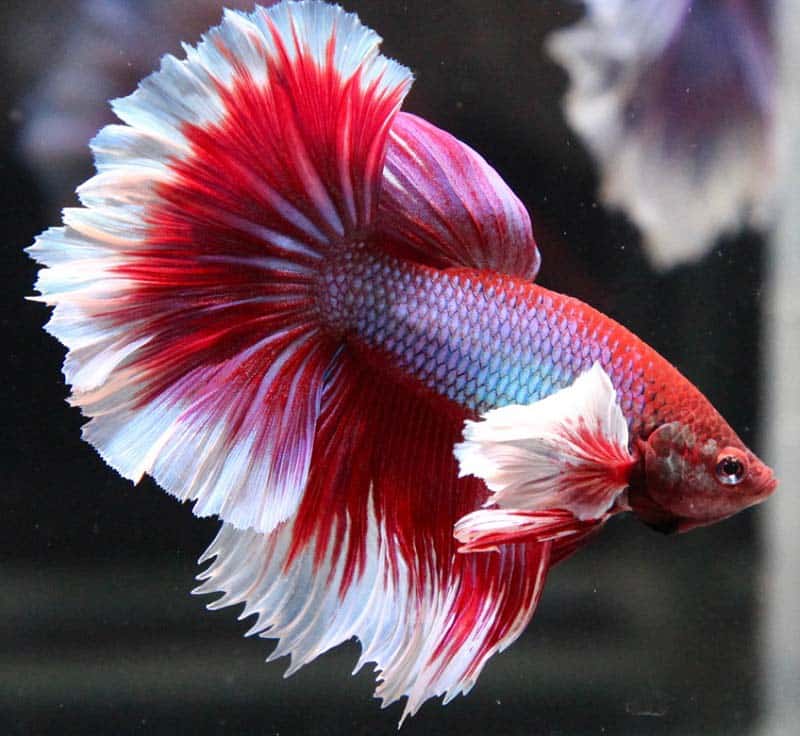
Don’t let their grumpy attitude turn you off completely, though. Once you understand how they behave, you can set up a tank where they’ll be happy. Plus, watching these fish, even if they’re bossy, can still be really interesting and make your tank a lively place.
Rosetail Betta Appearance (Varieties and Color)
While the classic Rosetail comes in a multitude of colors, the family also includes betta fish tail types and some specialized variants worth exploring.
1. Dragon Rosetail Betta
The Dragon Rosetail has a tail like a regular Rosetail but also has shiny “dragon” scales that look like armor. These shiny scales make the fish look almost like something from a fairy tale. They come in many colors, like deep blues and even lavender.
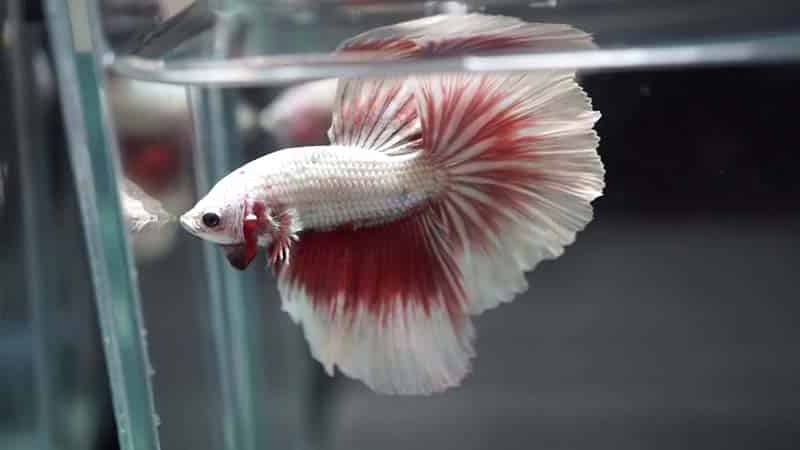
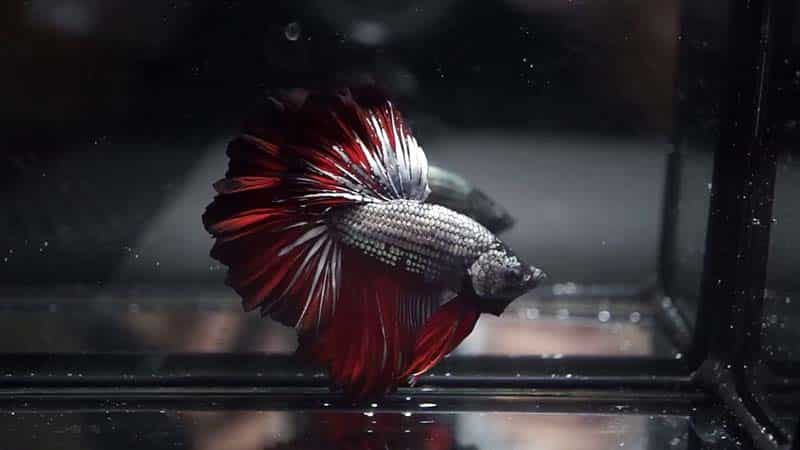
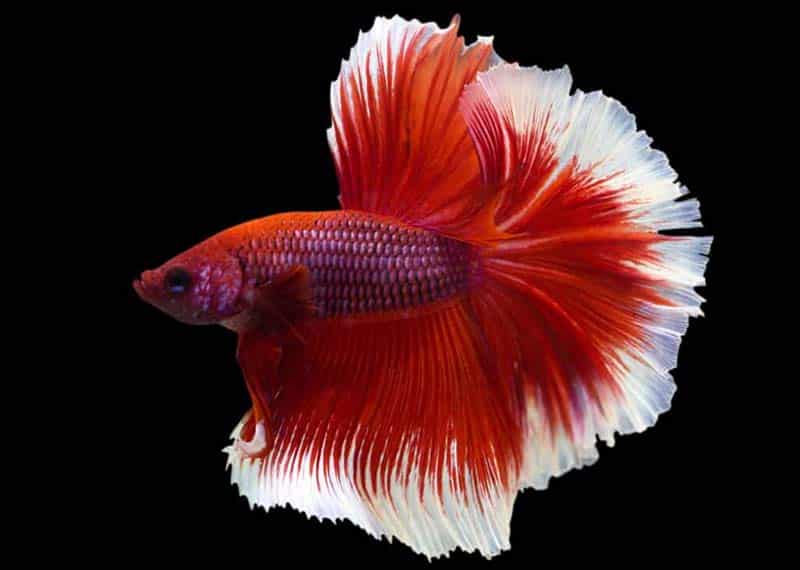
2. Half Moon Rosetail Betta
This type has the usual fancy rosetail fins but is more likely to get fin problems like tears or rot.
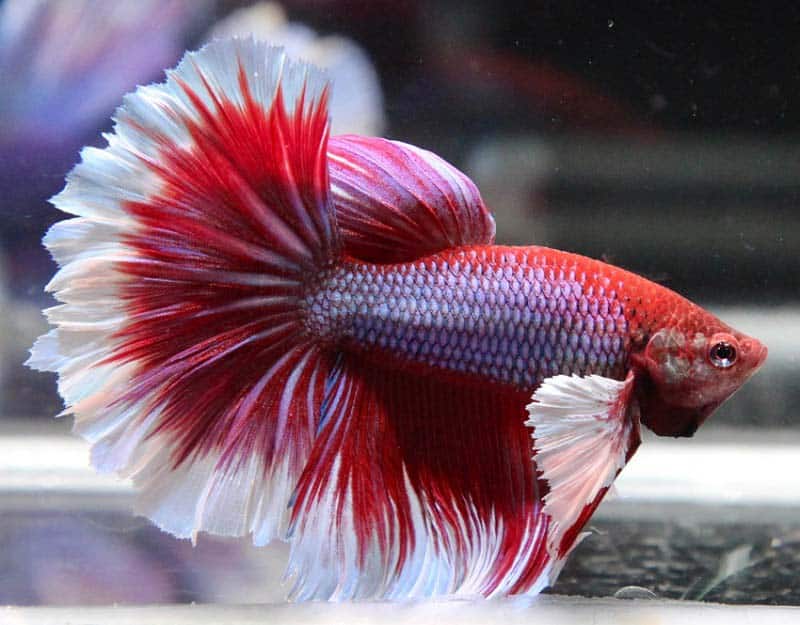
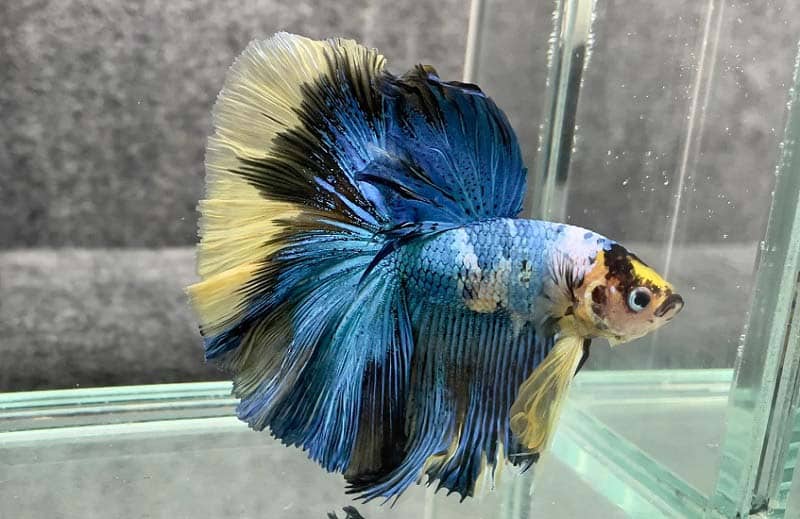
3. Red Rosetail Betta Fish
These Bettas are bright red and have the usual fancy rosetail fins, making them really eye-catching.
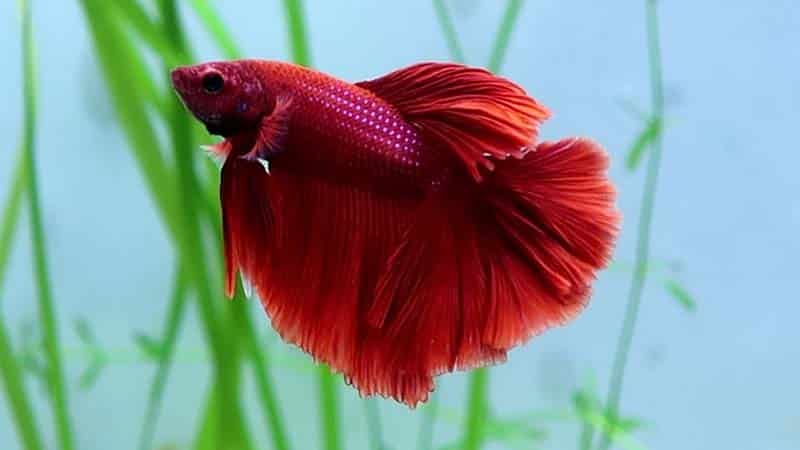
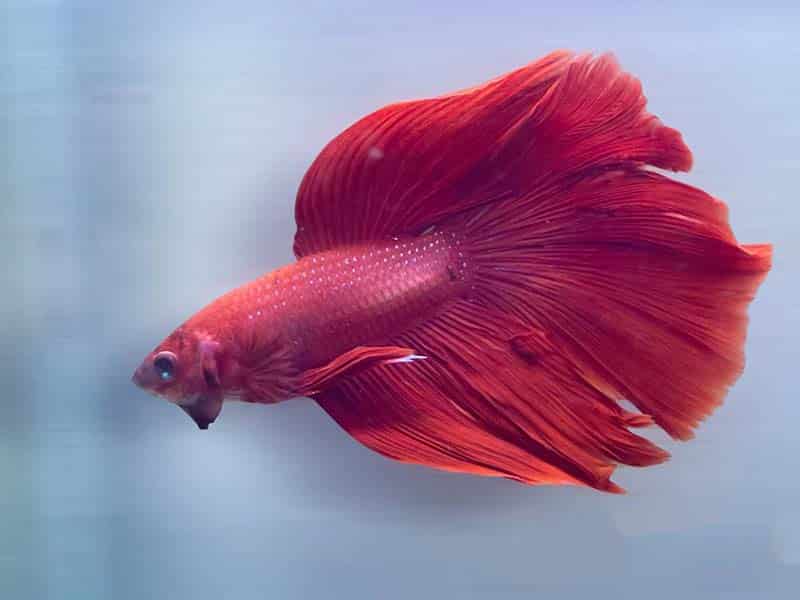
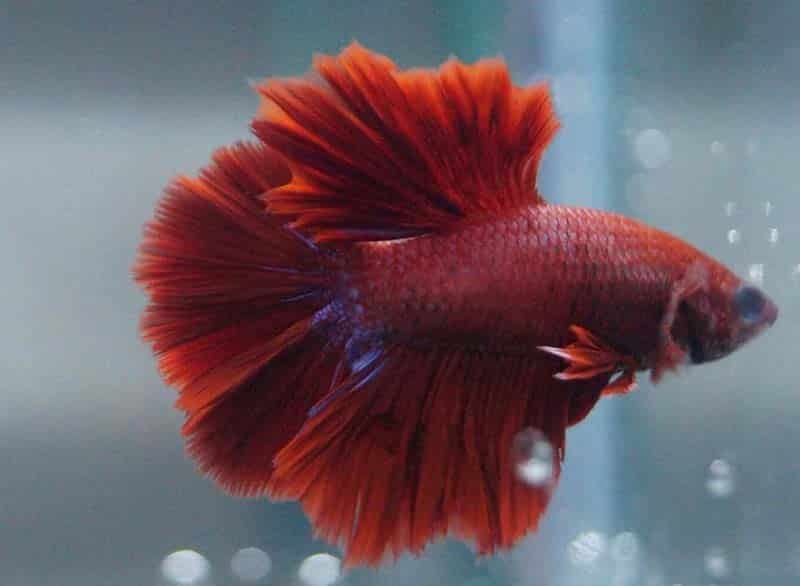
4. Dumbo Ear Rosetail Betta
Dumbo Ear Rosetail Betta have the fancy rosetail fins and really big side fins, which is why people call them “Dumbo Ear.”
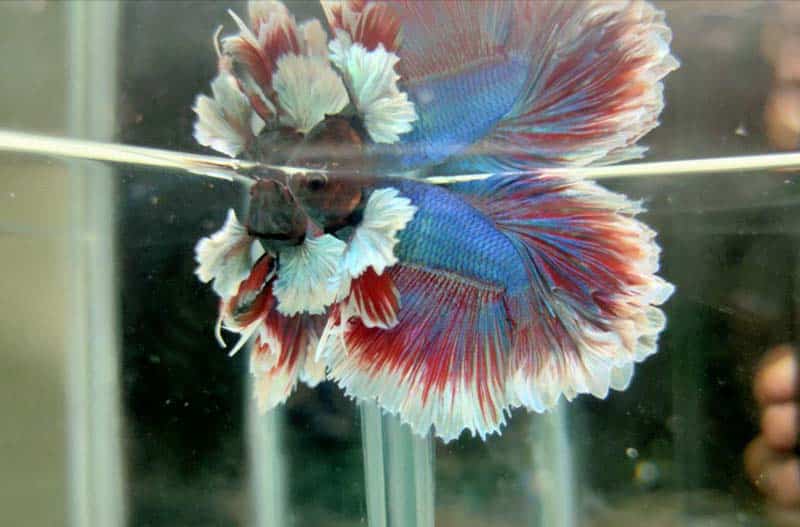
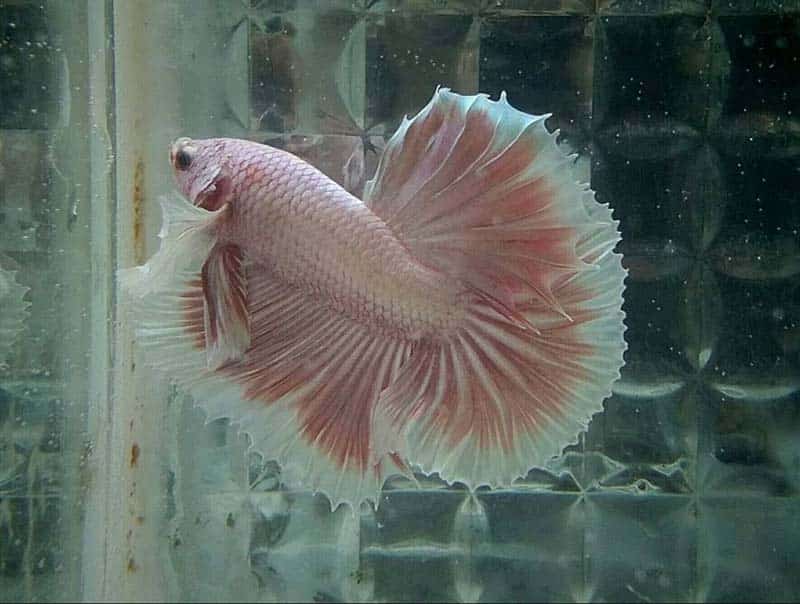
5. Mustard Gas Rosetail Betta
Mustard Gas Rosetail Betta have really interesting colors—usually blues or greens with dark edges and yellow or orange tails.

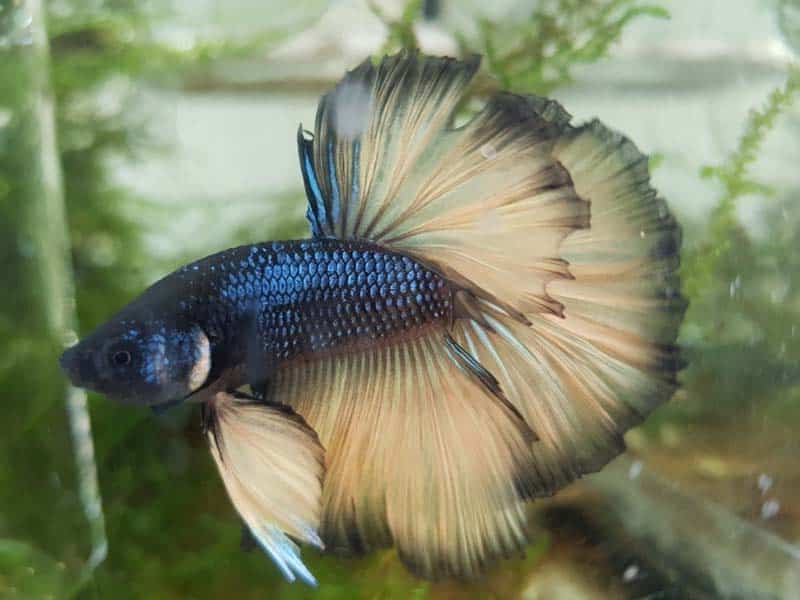
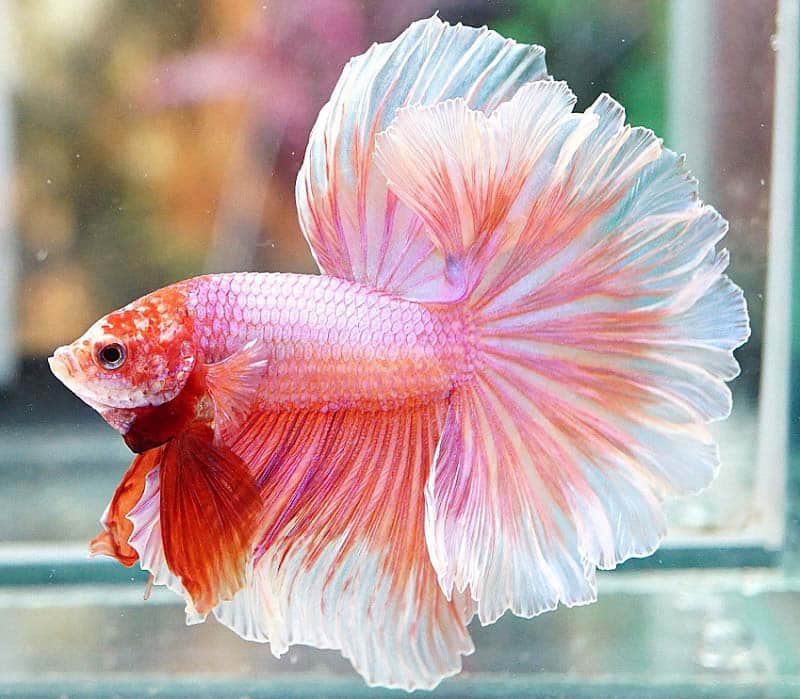
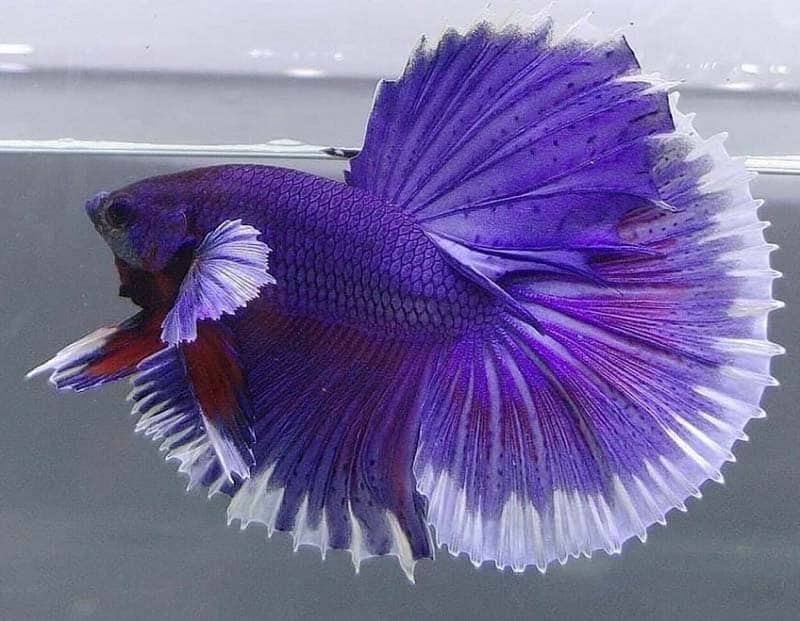
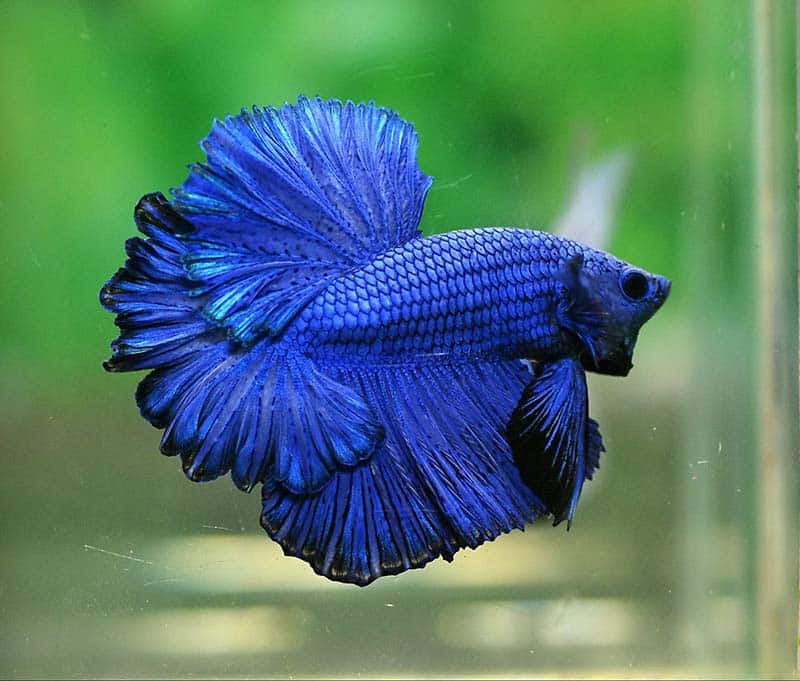
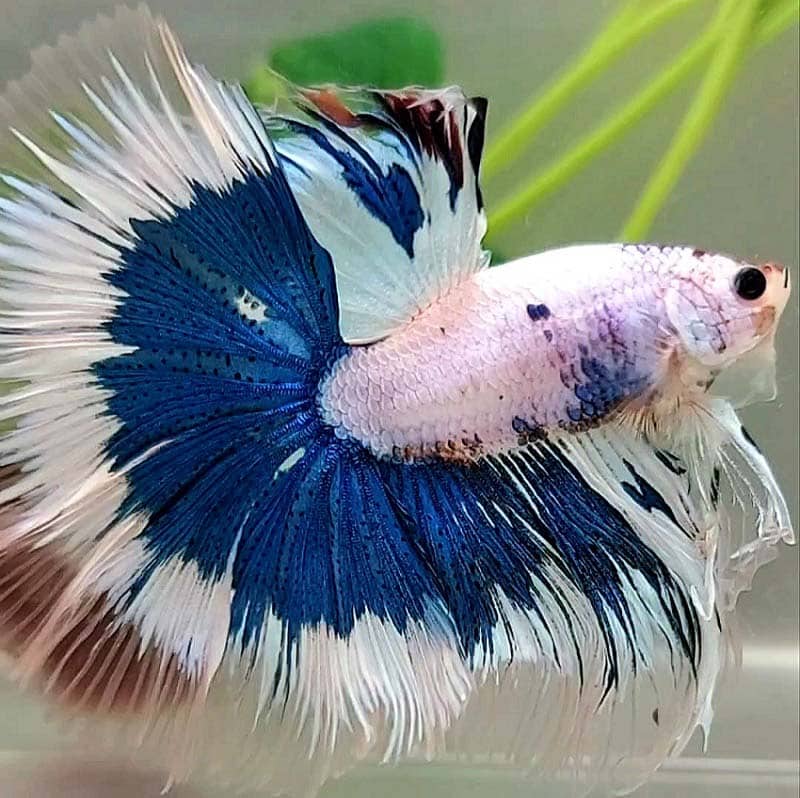
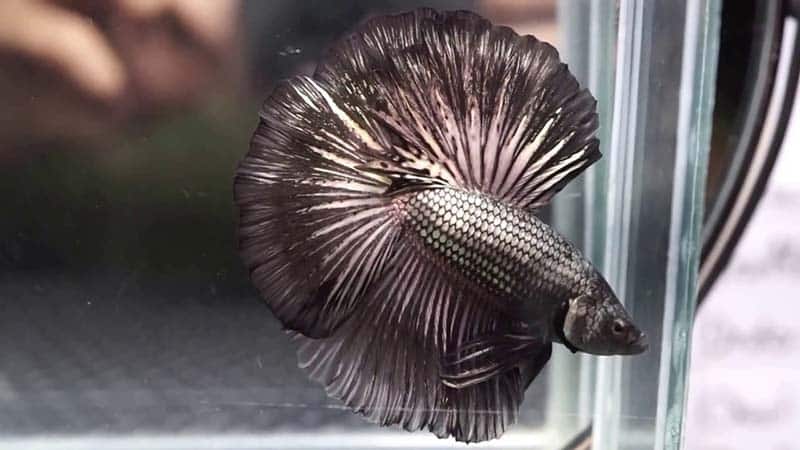

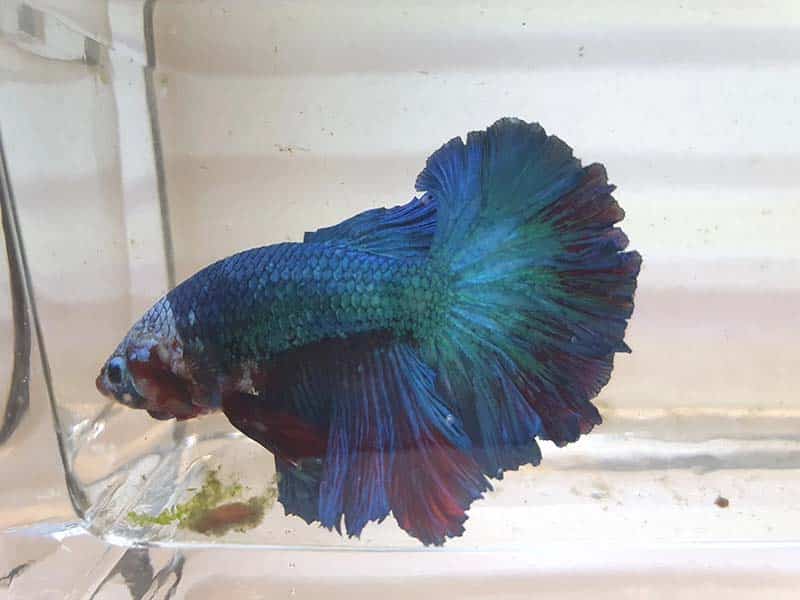
Maintaining the Health of Your Rosetail Betta
Rosetail Betta are beautiful fish but they need a lot of special care. Their fancy fins can get them sick, so you have to watch them closely if you want to keep one.
- For the water, you want it a little bit acidic, with a pH of 6.5 to 7.5. Keep the water temperature steady between 76 and 80 degrees Fahrenheit. You also have to make sure there’s no ammonia or nitrites; even a little bit can hurt the fish. Change the water every week to keep it clean.
- Pick one that moves the water gently. A strong current could harm the Betta’s fins.
- Good Betta food and sometimes give them treats like brine shrimp or bloodworms. Feed them a little bit once or twice a day. Giving them too much food can make them fat and dirty the water.
- Check the Betta’s fins often to make sure they’re okay. If they look torn or discolored, you’ll need to treat them right away.
- Keep them alone or only with very calm tank mates. Their fins are delicate and they can be territorial.
- Make their tank comfortable with smooth decorations and hiding spots like little caves. Keep the light soft and put the tank somewhere quiet to help them stay calm.
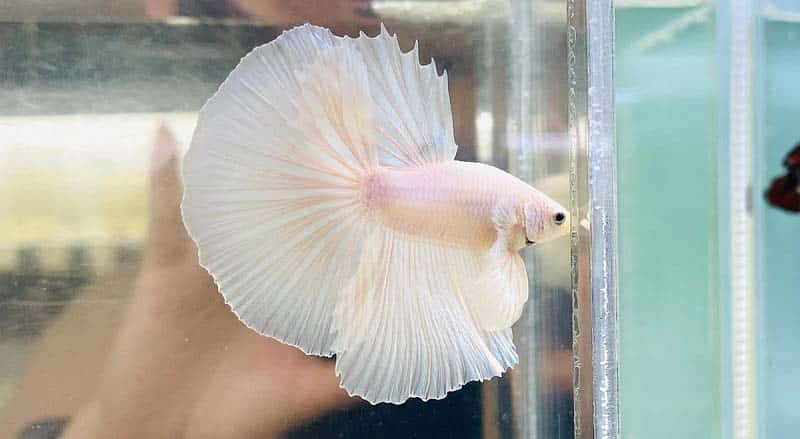
Rosetail Betta Breeding
Rosetail Bettas are really pretty fish, but they come with a lot of problems, especially when people try to breed them. Even if you know a lot about fish, you should think hard before breeding these Bettas.
If you’re thinking about breeding these fish at home, maybe don’t. It’s usually better left to the experts. And if you are an expert, make sure you’re following all the rules about how to treat animals well.
For everyone else, whether you’re just a fan of these fish or you’ve been breeding them for a while, it’s important to tell people about these issues. We all have to think carefully about what’s best for these beautiful but fragile fish.
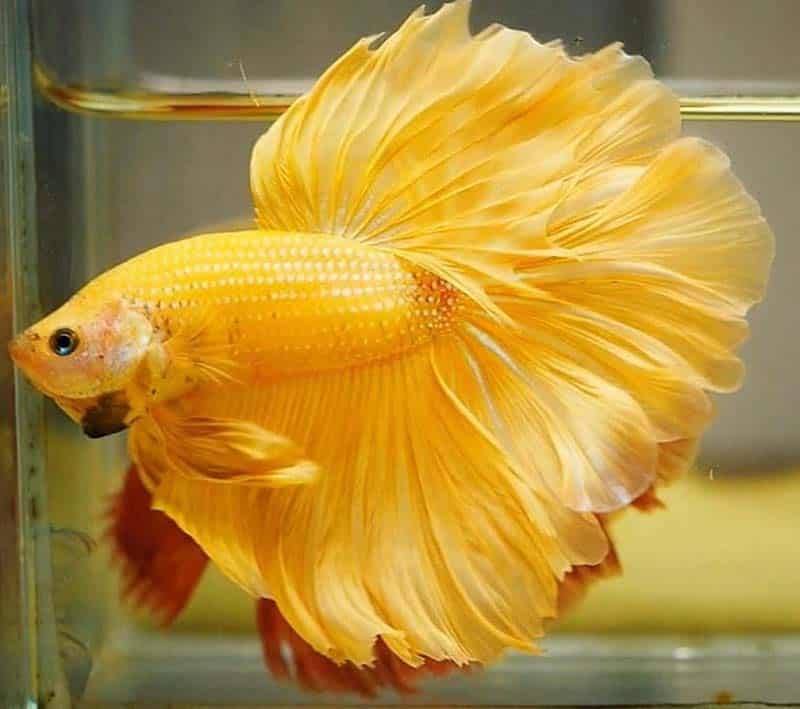
Conclusion
At the end of the article, we have gained an overview of the rosetail betta fish. They are a stunning species with a variety of colors and patterns. Rosetail betta are a subtype of the halfmoon betta and are known for their spectacular finnage, which features long, flowing fins resembling a rose’s petals. If you are looking for a fish for a small tank, you might consider getting a rosetail betta.




